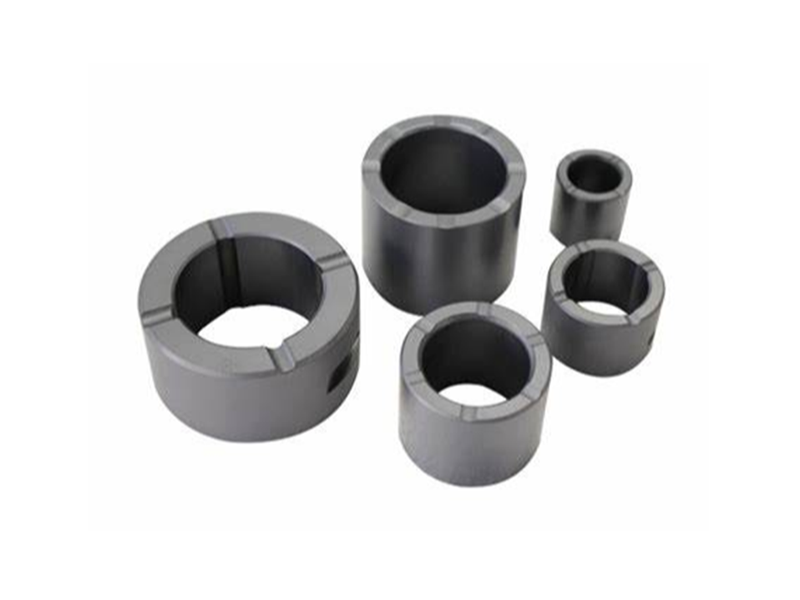The carbon content of each sintered specimen fracture is different, with a carbon content of A-2.5 awt.% in this range, forming a dense material with almost no pores, which is composed of uniformly distributed silicon carbide particles and free silicon. With the increase of carbon addition, the content of reaction-sintered silicon carbide increases gradually, the particle size of silicon carbide increases, and silicon carbide is connected with each other in a skeleton shape. However, excessive carbon content can easily lead to residual carbon in the sintered body. When the carbon black is further increased to 3a, the sintering of the sample is incomplete, and black “interlayers” appear inside.
When carbon reacts with molten silicon, its volume expansion rate is 234%, which makes the microstructure of reaction-sintered silicon carbide closely related to the carbon content in the billet. When the carbon content in the billet is small, the silicon carbide generated by the silicon-carbon reaction is not enough to fill the pores around the carbon powder, resulting in a large amount of free silicon in the sample. With the increase of carbon content in the billet, reaction-sintered silicon carbide can fully fill the pores around the carbon powder and connect the original silicon carbide together. At this time, the content of free silicon in the sample decreases and the density of sintered body increases. However, when there is more carbon in the billet, the secondary silicon carbide generated by the reaction between carbon and silicon rapidly surrounds the toner, making it difficult for the molten silicon to contact the toner, resulting in residual carbon in the sintered body.
According to the XRD results, the phase composition of reaction-sintered sic is α-SiC, β-SiC and free silicon.
In the process of high temperature reaction sintering, carbon atoms migrate to the initial state on the SiC surface β-SiC by molten silicon α-secondary formation. Since the silicon-carbon reaction is a typical exothermic reaction with a large amount of reaction heat, rapid cooling after a short period of spontaneous high temperature reaction increases the susaturation of carbon dissolved in liquid silicon, so that the β-SiC particles precipitated in the form of carbon, thereby improving the mechanical properties of the material. Therefore, secondary β-SiC grain refinement is beneficial to the improvement of bending strength. In the Si-SiC composite system, the content of free silicon in the material decreases with the increase of carbon content in the raw material.
Conclusion:
(1) The viscosity of the prepared reactive sintering slurry increases with the increase of the amount of carbon black; The pH value is alkaline and gradually increases.
(2) With the increase of carbon content in the body, the density and bending strength of the reaction-sintered ceramics prepared by pressing method first increased and then decreased. When the amount of carbon black is 2.5 times of the initial amount, the three-point bending strength and bulk density of the green billet after reaction sintering are very high, which are 227.5mpa and 3.093g/cm3, respectively.
(3) When the body with too much carbon is sintered, cracks and black “sandwich” areas will appear in the body of the body. The reason for the cracking is that the silicon oxide gas generated in the process of reaction sintering is not easy to discharge, gradually accumulate, the pressure rises, and its jacking effect leads to the cracking of the billet. In the black “sandwich” area inside the sinter, there is a large amount of carbon that is not involved in the reaction.
Post time: Jul-10-2023

